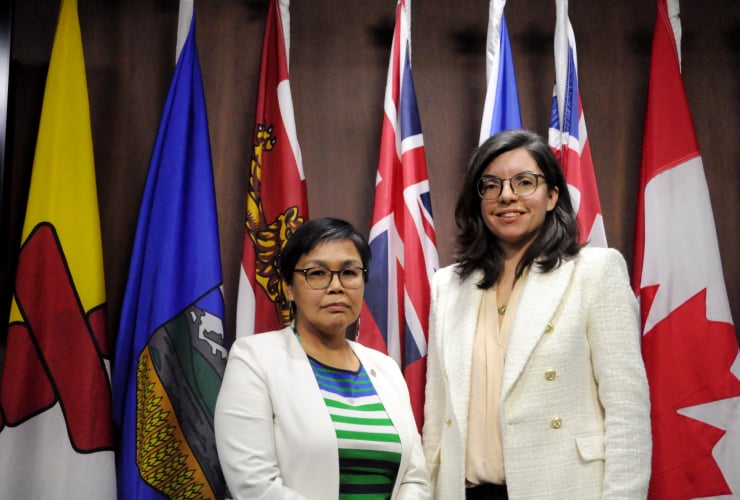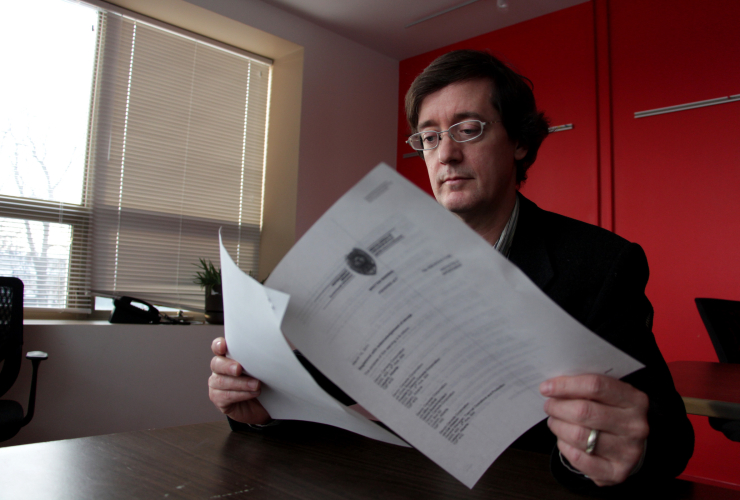The federal government unveiled a 10-step plan to transition Canada’s labour force that the Liberals say will help fulfil the party’s promise to leave no Canadian behind as the country — and the world — moves to a net-zero economy.
The new sustainable jobs plan partially delivers on the Liberals’ 2019 promise to create a Just Transition Act and was welcomed by think tanks and environmental groups following its release on Friday. Accompanying legislation will be tabled this year, according to the federal government.
“This is kind of our roadmap for the next three years,” said Hadrian Mertins-Kirkwood, a senior researcher at the Canadian Centre for Policy Alternatives. While the plan has its weaknesses, Mertins-Kirkwood says in general, it looks good and is a “helpful step.”
The 32-page plan promises a new federal office to help co-ordinate the jobs transition, training and retraining programs, and better data collection to improve what we know about existing jobs and those created in the future. It says if Canada plays its cards right, the clean energy economy will create so many jobs, there may not be enough workers to fill them.
Instead of “just transition” — a term which has been roundly criticized by Alberta Premier Danielle Smith — the federal government has started referring to the topic through the lens of “sustainable jobs,” meaning “any job that is compatible with Canada’s path to a net-zero emissions and climate-resilient future.”
Smith’s crusade against the federal government’s just transition promises has hinged on the idea that it seeks to phase out the oil and gas sector. In a technical briefing on Friday, federal officials emphasized it doesn’t plan to phase out any sectors or jobs — and the plan itself says that while demand for oil will decline in coming decades, demand will still exist and Canada’s sector can be a source of sustainable jobs if emissions during the production stage are reduced.
To Mertins-Kirkwood, this is one of the plan’s big weaknesses.
“It comes across as very soft on fossil fuels,” he said. Fossil fuels are the main driver of climate change and even if oil and gas producers reduce their emissions at the production stage, the bulk of planet-warming pollution is created when fossil fuels are burned to power cars or heat buildings, for example.
A sustainable jobs plan based on carbon capture technology “could leave workers stranded in a high-carbon past while the rest of the world has moved on,” noted Aliénor Rougeot, climate and energy program manager at Environmental Defence.
Canadian workers already possess the skills needed for many sustainable jobs and demand for these skills will only grow, according to the plan. For example, it says “work at a biofuels plant or hydrogen production facility utilizing carbon capture technology will be very similar to jobs at an existing refinery or large-scale gas facility.” Similarly, it adds the workers and skills required to do energy-efficient retrofits on Canada’s buildings will be “essentially the same” as those construction workers already possess.
The plan also includes the step of developing economic strategies through the Regional Energy and Resource Tables, a Natural Resources Canada initiative that brings together the federal government and provinces and territories (as well as Indigenous partners, unions, municipalities and other partners) to develop region-specific strategies for sustainable job creation and economic growth driven by clean energy and resource sectors.
“On the face of it, this is very good,” said Mertins-Kirkwood, referring to the regional energy and resource tables. “We need this kind of central co-ordination and planning when it comes to economic development and you need buy-in from all stakeholders to do it.”
But this third step of the plan raises “the biggest red flags” because asking provinces and stakeholders to “please, come to the table” is a “very soft-handed approach” from Ottawa, he said.
“My concern is: What do you do when the provinces in industry don't come to the table?” Mertins-Kirkwood said, noting this is currently the situation with Alberta.
To him, this approach signals the federal government isn't willing to force the hand of reticent governments and industries.
The sixth step of the plan highlights a commitment to release a National Benefits-Sharing Framework in 2024 to promote Indigenous-led solutions and participation in the natural resources sector. Essentially, it would seek to ensure First Nations, Inuit and Métis communities directly benefit from major resource projects in their territories.
Although Indigenous communities and governments are slated to be invited to the regional energy and resource tables, Laura Cameron, a policy analyst for the International Institute for Sustainable Development, says there should be more mechanisms and resources for Indigenous communities to weigh in on designing transition pathways.
“The UN Declaration on the Rights of Indigenous Peoples and Indigenous rights and title [need] to be embedded into any sustainable jobs or just transition planning,” said Cameron.
Along with providing a much-needed roadmap for 2023-25, the interim plan sets the stage for action plans to be created every year starting in 2025.
In a news release, Canada’s Buildings Trades Unions said Budget 2023 should tie incentives like investment tax credits to high labour standards and apprenticeship and diversity hiring to “maximize benefits for the entire economy and create a legacy of good-paying, middle-class jobs throughout this transition.”
A sustainable jobs stream under the Union Training and Innovation Program announced in the Fall Economic Statement is expected to benefit 20,000 apprentices and journeypersons. It remains to be seen whether Deputy Prime Minister Chrystia Freeland’s upcoming budget will reflect the level of ambition needed to support good, unionized jobs across the country, Caroline Brouillette, interim executive director of Climate Action Network, said in a statement reacting to the plan.
— With files from The Canadian Press
Natasha Bulowski / Local Journalism Initiative / Canada’s National Observer
William Mitchell is Professor
William Mitchell is Professor in Economics and Director of the Centre of Full Employment and Equity (CofFEE), University of Newcastle, NSW, Australia
http://bilbo.economicoutlook.net/blog/?p=34479
"A just transition in any threatened region or sector requires government intervention and community partnerships to create the regulatory framework, infrastructure and market incentives for the creation of well-paid, secure, healthy, satisfying environmentally-friendly jobs with particular attention to appropriately meeting the needs of affected workers and their communities.
Government support in a progressive world must include:
Assistance for both displaced workers and for contractors;
Adequate notice of workplace change and closures;
Consultation with and full engagement of relevant unions;
Support for innovation and partnerships for new local industries, research and development and infrastructure investments;
Training and alternative employment tailored to local and individual needs and opportunities;
Special targeted support for older, disabled and less educated workers;
Relocation assistance for displaced workers;
Income maintenance, redundancy entitlements and retraining allowances;
Cheap loans and subsidies for new industries and employers;
Compensation and equipment buy-outs for contractors;
Assistance programs extended to workers employed by contractors;
A just transition requires investment in training programs and apprenticeships to create a highly trained ‘green’ workforce;
The introduction of a Job Guarantee to provide continuous employment for all those without work."
Well this sounds wildly
Well this sounds wildly uptopian, especially with all the conservative premiers, of whom the most generous assessment would be that they DON'T GET climate change.







Comments